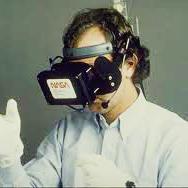Cybersickness remains a significant challenge in virtual reality (VR), limiting its usability across various applications. Existing mitigation strategies focus on optimising VR hardware and/or software and enhancing self-motion perception to minimise sensory conflict. However, anticipatory postural adaptation, a strategy widely studied with regards to motion sickness while being driven, has not been systematically examined in VR. Therefore, in this study, we explore whether adopting comfort-orientated postural movements, based on the literature, mitigates cybersickness. We conducted an exploratory analysis using a cumulative link mixed model (CLMM) on secondary data from a VR-based postural alignment experiment. Results indicate that misalignment between trunk roll and the virtual trajectory increases the odds of reporting higher cybersickness scores by 5%. Additionally, each additional minute in VR increases the odds of reporting higher cybersickness scores (FMS scores) by 11% %, but prolonged exposure leads to a 75% % reduction in the odds of reporting cybersickness symptoms, suggesting adaptation effects. Individual differences also play a role, with higher cybersickness susceptibility increasing the odds of reporting higher symptom severity by 8%. These findings indicate that anticipatory postural adaptation could serve as a natural mitigation strategy for cybersickness. VR applications, particularly in training and simulation, may benefit from designing adaptive cues that encourage users to align their posture with virtual movement. Future research should explore real-time postural feedback mechanisms to enhance user comfort and reduce cybersickness.
翻译:暂无翻译




